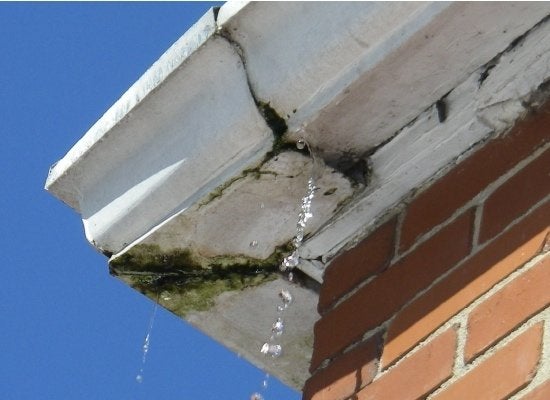Five Signs That You Need New Gutters
When properly maintained, your home’s gutter system should last for a long time. However, these parts are not designed to last forever.
There are a few telltale signs that your gutters may need repair. In some cases, a full gutter replacement may even be necessary. Here are the red flags to look out for.
1. Visible Cracks
When your gutters become cracked, they’re immediately less effective. Think about it: Where is water most likely to go during a storm? That’s right — it will find the crack and run right through it.
Not only do cracks cause water to run out, but they can also damage the materials around the gutters. This includes the fascia board behind them, as well as the shutters above and the foundation below.
While you might be able to spot large, visible cracks easily on a sunny day, keep in mind that others can be more elusive. You may not know that you have smaller, hairline cracks until a storm occurs, and you notice water draining out at certain spots.
Regardless of whether they’re small or large, it’s important to get cracked gutters inspected right away. This structural issue defeats the purpose of your entire drainage system. While some smaller cracks may be repairable, larger ones may warrant an entire replacement.
2. Peeling Paint
Today, you can find gutters in a variety of paint colors, designed to match the aesthetic of your home’s exterior. Two of the most common and classic choices are black and white.
Under normal conditions, this paint should hold up against daily wear and tear. It’s designed to maintain its look in any season, including adverse weather.
However, if you’ve noticed that your paint has started to peel, it might be time to schedule an inspection. Especially in old systems, peeling paint can signify that the gutters are holding standing water. You may also notice orange flecks below the paint’s surface.
This could be a result of a crack somewhere in the gutter. Or, it may indicate that the gutter is too old and inefficient to correctly remove water away from your home. Either way, repair or replace the compromised parts as soon as possible to prevent further damage.
3. Leaks at the Seams
In a typical gutter setup, seams are present where two horizontal sections intersect with one another. Similar to the way a clothing seam will show wear before any other part, these areas often break down first.
You may notice that water is leaking out at this spot, or that the two sections have started to separate. While a repair team can often reconnect the seams and mitigate the issue, you may want to consider upgrading to seamless gutters instead.
4. Water Near the Foundation
When working properly, gutters help channel water away from your home, so it doesn’t collect at your foundation. If you’ve noticed pools of standing water around the base of your home, this could be a sign of a problem. Excess moisture fuels the growth of mold and mildew, which can damage your property and lead to a host of health issues.
In some cases, the issue is as simple as a small plug somewhere in the gutter. Other times, there’s a more serious problem at play, such as a complex defect. A gutter company can help you assess the extent of the damage and determine what’s causing water to accumulate where it doesn’t belong.
5. Moisture Damage on Exterior
If your gutters aren’t working correctly and excess water is dripping onto your exterior, it can affect its appearance. You might notice that your wooden trim elements, such as window sills and door jams, have started to show signs of rot. Or, the paint on your siding or wood paneling might be starting to peel away or bubble up due to the excess moisture.
If these issues are isolated, your gutters may not be the culprit. However, it’s always smart to get them checked out, especially if the damage is more widespread and visible.
Gutter Performance Matters
A properly functioning gutter system is more important than many homeowners realize. If any of the signs above sound familiar, ask a professional contractor to take a look at yours.
Don’t hesitate when it comes to this step. Whether you need a quick, minor repair or a more extensive replacement, this is one investment that can extend the lifespan, comfort, and appearance of your home. Even a minor issue can turn into a bigger, more expensive problem down the road.

